What is Garment-Dyed? Guide to Soft, Vintage Color And Labels
“Garment-dyed” means clothes are colored after they are fully made. This gives them a super soft feel and a cool, slightly uneven vintage look. It’s different because the whole item, seams and all, gets dyed together. This method is great for comfy, casual wear and trendy faded colors. But it’s important to choose the right labels, like those from Packlove, that can handle the process or are added afterwards.
1. What does “garment-dyed” mean?
1.1 Explaining “garment-dyed” in easy words
Garment-dyed means that clothes get their color after they are completely made – sewn together into a finished item like a t-shirt or hoodie. Think of it like this: a plain white t-shirt is fully made first. Then, the entire finished t-shirt is put into a big bath of color.
That’s garment-dyeing. This is different from the usual way, where the big roll of fabric is colored before it’s even cut and sewn into clothes. This special way of dyeing makes clothes feel very soft and gives them a cool, slightly faded look.

1.2 Dyeing clothes after they are sewn together
So, the most important thing to remember about garment-dyeing is when the color is added: it happens to the finished product, not to the fabric roll before it’s made into clothes. This timing is key because it changes how the clothes look and feel in the end. Everything – the main fabric, the seams, and sometimes even the sewing threads – gets colored together.
1.3 Why this method is popular for certain looks
Brands choose garment-dyeing for a few special reasons.
- Super soft feel: It makes clothes incredibly soft and comfortable, right from the first wear.
- Vintage or faded style: It’s perfect for getting that cool, slightly worn-in, or vintage appearance that’s very popular.
- Unique color shades: Each item can have tiny, unique differences in color, especially around the seams, which adds character.
You’ll often find this method used for casual wear like t-shirts, sweatshirts, hoodies, and other comfortable everyday wear where that relaxed, lived-in style is desired. This highlights the visual appeal of garment-dyed clothes in fashion apparel.
2. How does garment-dyeing work? The process
2.1 Step 1: The clothes are made first (usually from undyed fabric)
The journey of a garment-dyed item starts with making the actual piece of clothing. This means the t-shirt, hoodie, or pants are fully cut and sewn together first. Usually, these clothes are made from undyed fabric, often called ‘prepared for dye’ (PFD), which is typically white or a very light, natural color.
Cotton is a very popular choice for garment-dyeing because it soaks up color really well. Linen is another good option. These natural fabrics help achieve that soft feel and rich color. Many brands use cotton for its excellent dye absorption and comfort, making it highly suitable for garment dyeing.
2.2 Step 2: The dyeing bath – giving the whole garment its color
Once the clothes are made, they are loaded into large washing machine-like machines designed for dyeing. Inside these machines, the clothes are tumbled in hot water mixed with special dyes and other chemicals. These chemicals help the color stick to the fabric and get the exact shade the brand wants, affecting the color saturation.
As the entire garment is immersed, everything gets dyed: the main fabric, seam stitching, and even cotton drawstrings if present. This textile dyeing method imparts a unique, consistent yet subtly varied coloration all over the garment. The tumbling action, unlike piece dyeing (dyeing fabric in flat rolls), also helps the dye penetrate evenly and contributes to softening the fabric.
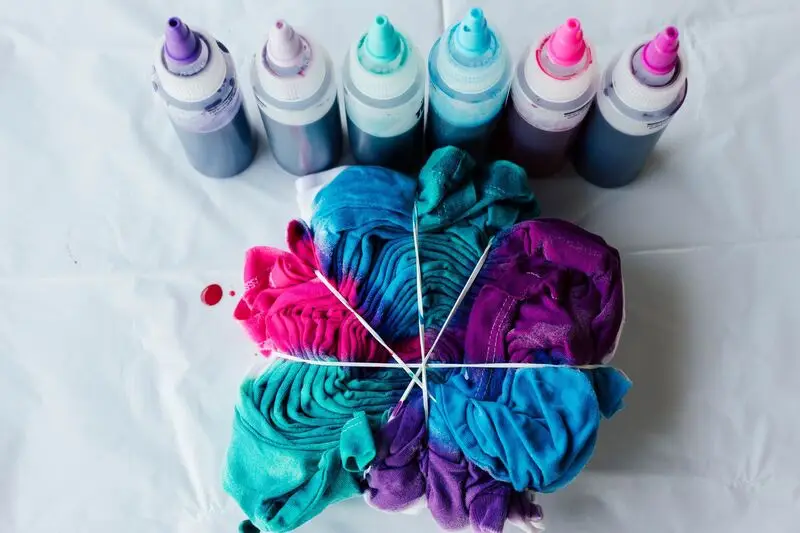
2.3 Step 3: Washing and finishing – creating softness and a lived-in feel
After the clothes have soaked up the color, they go through a series of washing and rinsing cycles. This is a very important step. These washes remove any loose or extra dye. Often, special softeners are added during this stage. This washing and softening process is what makes garment-dyed clothes feel so incredibly soft and comfortable, influencing their resulting texture (e.g., soft, lived-in).
It also helps to ‘set’ the color and can make the clothes pre-shrunk, meaning they are less likely to shrink much when you wash them at home. From our experience at Packlove, this finishing wash is crucial for achieving that signature comfort and stable fit that customers love about garment-dyed items; garment dyeing’s result is a softer fabric feel.
2.4 Dyes used (e.g., pigment, reactive)
Different types of dyes can be used in garment-dyeing. You might hear about:
- Pigment dyes: These dyes sit more on the surface of the fabric. They can create a nice, slightly faded or ‘washed’ look over time. This is sometimes referred to as a process: pigment wash.
- Reactive dyes: These reactive dye types bond chemically with the fabric fibers. They usually give very vibrant, long-lasting colors.
You don’t need to be a chemistry expert! Just know that the type of dye used can affect the final color, how it wears over time, and how bright it is.
3. Good things about garment-dyed clothes (The pros)
3.1 Extra soft and comfortable feel
One of the biggest reasons people love garment-dyed clothes is how incredibly soft and comfortable they feel. The process of dyeing the whole garment, along with the washing and tumbling, helps to break in the fabric fibers. This makes the material much softer than if it was dyed as a stiff roll of fabric and then made into clothes.
This means garment-dyed items often feel like your favorite, worn-in clothes from the very first time you put them on. We often hear from brands that their consumers appreciate the softness of garment-dyed clothes. Indeed, garment dyeing’s result is a softer fabric feel.
3.2 Unique, slightly uneven color for a special look
Garment-dyeing creates a special color effect that’s hard to get any other way. The color is often not perfectly flat or uniform like in other dyeing methods. You might see very subtle differences in shade, especially around the seams, hems, collars, and cuffs where the fabric is thicker or stitched together.
This gives the color outcome (e.g., subtle variations, depth) more character. This slightly uneven, ‘lived-in’ look is often called a vintage appearance or distressed look, and many people love it because it makes each piece feel a bit unique. No two items are exactly identical, which is a characteristic: vintage appearance highlighting unique color variations. Garment-dyed clothing has a characteristic of slight color irregularities.
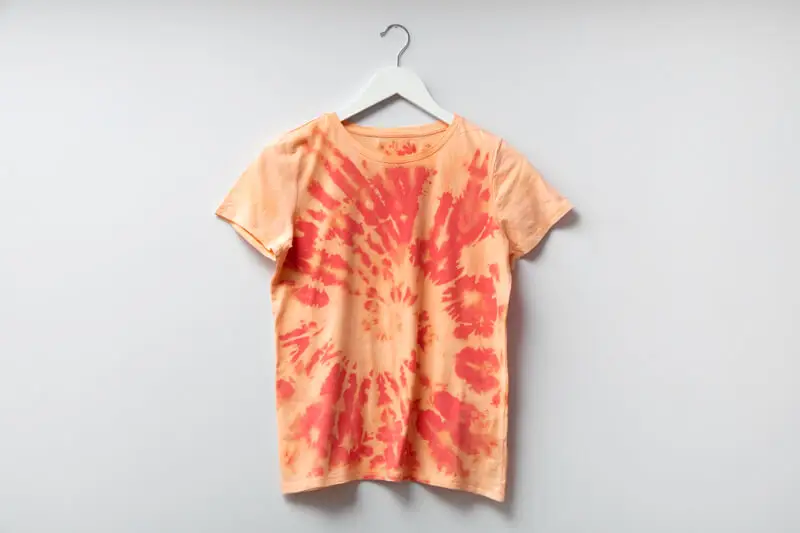
3.3 Great for achieving trendy, washed-out colors
This dyeing method is fantastic for creating those popular muted, sun-faded, or gently washed-out colors that are very trendy. Think of soft pastels, earthy tones, or colors that look like they’ve been naturally weathered by the sun and sea.
Garment-dyeing achieves these stylish, relaxed color palettes beautifully for fashion apparel and casual wear. Many fashion brands we work with at Packlove choose garment dyeing specifically to achieve these on-trend, softer color stories for their collections.
3.4 Clothes are often pre-shrunk during the process
A great practical benefit is that garment-dyed clothes are often pre-shrunk. The hot water used in the dyeing and washing process usually makes the fabric shrink as much as it’s going to, before you even buy it. This means the size and fit you try on in the store are more likely to be the size and fit you get after washing it at home. You’ll have fewer surprises with unwanted shrinkage, directly impacting how garment dyeing affects clothing fit and shrinkage.
4. Things to keep in mind with garment-dyed clothes
4.1 Potential for more shrinkage if not done correctly
While garment-dyed clothes are usually pre-shrunk, there’s a small ‘but’. If the dyeing process isn’t controlled very carefully (like using water that’s too hot for a specific fabric, or if the fabric itself isn’t ideal for the process), some extra shrinkage could still happen later.
This again touches on how garment dyeing affects clothing fit and shrinkage. It’s always a good idea to check the care label on the garment for any specific washing instructions to be safe.
4.2 Slight color differences between batches or items are normal
Because each load or ‘batch’ of clothes is dyed separately, you might find small differences in color from one batch to another. Even two t-shirts of the ‘same’ color made at different times might not be perfectly identical.
For many, this is part of the charm and uniqueness of garment-dyed items, where garment-dyed clothing has the characteristic of slight color irregularities and unique color variations.
4.3 Not all fabrics and trims are suitable
Garment-dyeing works best with certain fabrics. Natural fibers like cotton and linen are great. However, some fabrics, especially many synthetics like certain polyesters or nylons, don’t absorb dye well in this process or could even be damaged by the heat and chemicals. This is a key consideration for garment dyeing on delicate fabrics.
Also, things like buttons, zippers, special patches, or even some sewing threads need to be chosen carefully by the clothing maker due to the impact on non-fabric trims (buttons, zippers if dyed with garment). If they are made of plastic or materials that react differently to dye or heat, they might not dye the same color as the main fabric, or could warp, melt, or get damaged.
Manufacturers need to plan this very well. This is why choosing the right labels is also crucial if they are attached before dyeing, which we’ll discuss next. The label material has to withstand the process.
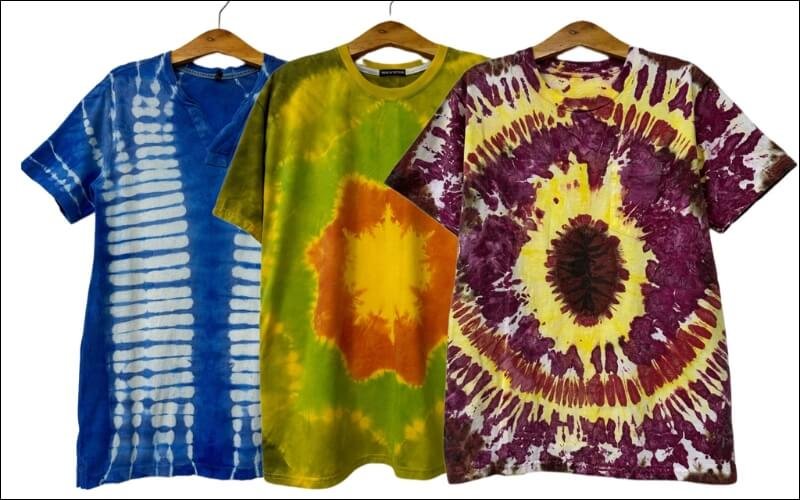
4.4 Can affect thread color (may dye differently than fabric)
Sometimes, the thread used to sew the clothes together is made of a different material than the main garment fabric. For example, a cotton t-shirt might be sewn with polyester thread because it’s strong. If this is the case, the thread might take the dye differently than the cotton fabric.
The stitching could end up looking a bit lighter, darker, or even a slightly different shade. This is called ‘differential dyeing’ and is another example of the impact on non-fabric trims. Sometimes this is a cool design feature that adds contrast. Other times, if it’s not planned, it can look a bit off. Good manufacturers consider this when choosing their threads for items that will be garment-dyed.
5.1 The big question: How does garment dyeing affect labels?
If you’re a brand creating garment-dyed clothes, one very important thing to think about is your branding – especially your labels! If labels are sewn into the clothes before they go into the dye bath, those labels will experience the same hot water, tumbling, and dyeing chemicals as the garment itself. This is crucial when considering the best labels for clothes that will be garment-dyed and labels for garment dyeing. This can cause big problems if you choose the wrong type of label. Labels might:
- Bleed their own colors onto the garment.
- Absorb the garment’s dye and change color.
- Shrink, pucker, or wrinkle badly.
- Get damaged or fall apart.
5.2 Labels attached before dyeing: What happens?
Some brands prefer to attach all labels before the dyeing process for efficiency. If this is your plan, the material of your label is the most critical factor.
5.3 Woven labels
Woven labels can be a good option for attaching before garment dyeing, if they are made from the right material. The best choice is usually 100% polyester. Polyester fibers are synthetic and generally do not absorb the types of dyes used for cotton or other natural fibers.
This means a polyester woven label can stay its original color (for example, a white label with a black logo can remain white and black) even when the cotton garment around it is dyed blue or green. The density of the weave and overall quality of the polyester woven label also help it withstand the dyeing process without fraying or losing shape.
At Packlove, we specialize in producing high-quality Woven Labels from 100% polyester that are specifically designed to endure the garment dyeing process. Packlove advises on durable label materials (e.g., woven polyester) that withstand the garment dyeing process.
We can advise you on the correct weave (like damask for fine details or taffeta for a flatter finish) and thread specifications to ensure your brand logo looks crisp and clean, maintaining its original colors after dyeing. A Packlove Woven Label offers durability and withstands garment dyeing when the appropriate material is chosen. We’ve helped many brands successfully use our polyester woven labels on their garment-dyed lines.
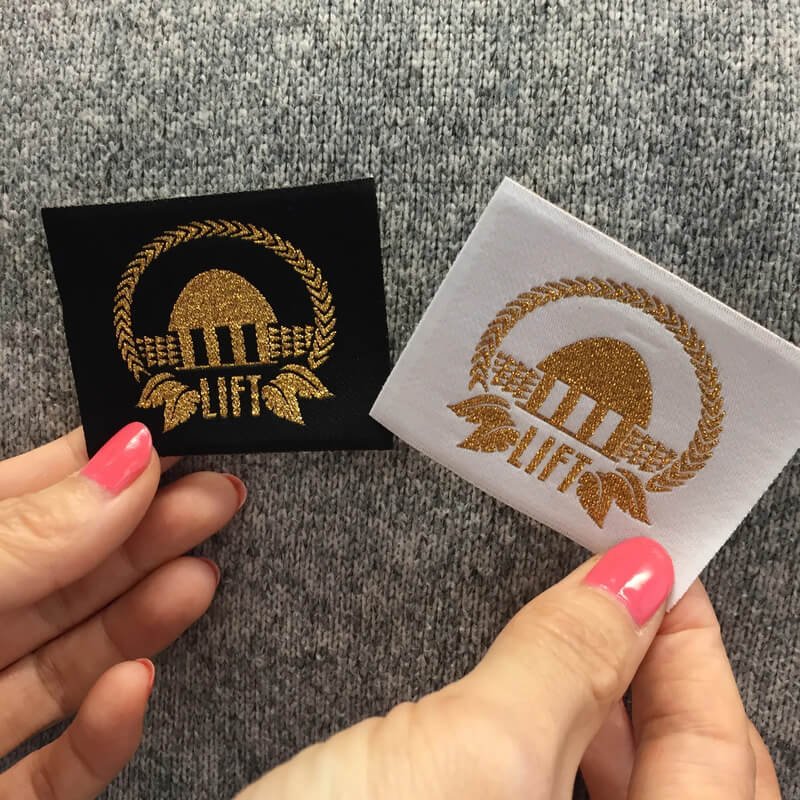
5.4 Heat transfer labels
Generally, heat transfer labels (a label applied to fabric using heat and pressure, often tagless), also known as tagless tags, are best applied after the garment has been dyed and washed. If you apply a heat transfer label before garment dyeing, there are significant risks. The heat, water, and chemicals in the dye bath can:
- Weaken the adhesive, causing the label to peel off or crack.
- Cause the label itself to distort, discolor, or bubble.
- The dye might stain or seep under the transfer.
For the best, most reliable results with heat transfer labels on garment-dyed items, Packlove advises applying them once the dyeing and finishing process is totally complete. We provide high-quality Heat Transfer Labels that offer a smooth, comfortable feel, and we can guide you on the best application settings for your specific (already dyed) fabric. This ensures your branding is sharp and lasts long.
5.5 Rubber labels (PVC/silicone patches)
Rubber labels, including PVC patches or silicone patches, are generally quite sturdy. The material itself can usually withstand the heat and tumbling of the garment dyeing process. However, the main concern is how the color of the rubber label will interact with the garment dye. Some dyes might stain or slightly alter the color of the patch, especially if the patch is a light color. The texture of the patch might also trap some dye particles.
For these reasons, stitching or attaching rubber labels after dyeing is often the safest way to make sure the label keeps its original, intended look. If you really want to attach them before, thorough testing with your specific rubber label material and dye colors is absolutely essential.
Packlove offers custom Rubber Labels in PVC and silicone. We can discuss material options and colors if you plan to test pre-dyeing application. Alternatively, we can supply your rubber labels ready for easy attachment after your garments are dyed,
ensuring your branding looks exactly as designed.
5.6 Labels attached after dyeing
For many brands, the simplest and safest way to ensure your labels look perfect on garment-dyed items is to attach them after the clothes have been completely dyed, washed, and finished. This approach removes all risks of your labels being damaged, discolored, or distorted by the dyeing process. Your main brand labels, size labels, care labels, or decorative patches will look exactly as you designed them, with crisp colors and details.
Packlove provides a wide variety of high-quality labels for garment-dyed apparel perfect for post-dyeing application. This includes our Woven Labels, printed satin labels (great for soft care labels), Heat Transfer Labels, and Rubber Labels. We can help you choose the best type and attachment method for your specific garments and branding goals. Packlove provides labels for garment-dyed apparel.
Garment-dyed clothes have special qualities like their unique color variations and super soft feel. Why not tell your customers about it? Hang tags are a fantastic way to do this! A custom hang tag can explain to your customers: ‘This item has been specially garment-dyed to give it a unique, ultra-soft finish.
Slight variations in color are a natural part of its charm and make each piece one-of-a-kind.’ This helps manage customer expectations about color nuances and highlights the premium, crafted nature of the product; it helps explain unique characteristics.
This little piece of information can turn a potential ‘is this a flaw?’ question into a ‘this is special!’ appreciation, enhancing your brand’s story and perceived value. At Packlove, we design and print beautiful, custom hang tags that can perfectly tell this story for your garment-dyed products.
We can help you with the design, material choices (like kraft paper for a rustic look or coated card for a premium feel), and even the wording to effectively communicate the unique benefits and characteristics of your apparel. It’s a small detail that makes a big branding impact.
Elevate your brand story! Design Your Custom Hang Tags with Packlove or See Inspiring Hang Tag Examples Here.
5.8 Making smart choices for your brand with Packlove’s help
As you can see, choosing the right labels and tags is a key detail when working with garment-dyed products. The right choice protects your brand image, ensures durability, and can even educate your customers.
Whether you need dye-resistant polyester woven labels to go through the dyeing process, crisp heat transfer labels for post-dye application, unique rubber patches, or informative hang tags to tell your product’s story, Packlove has the expertise and the solutions. Packlove provides labels for garment-dyed apparel.
6. Caring for your garment-dyed clothes so they last
6.1 Simple washing instructions to prevent fading
For caring for garment-dyed items to prevent fading, follow these tips:
- Wash in cold water: Hot water can cause colors to fade faster.
- Wash with similar colors: Especially for the first few washes, as a little bit of extra dye might still come out. This prevents it from staining lighter clothes.
- Turn inside out: This helps protect the outer surface and color during washing.
- Use a gentle cycle: A less aggressive wash cycle is kinder to the fabric and color.
- Use mild detergent: Harsh detergents or bleach can strip color and damage soft fibers. Always avoid bleach unless the care label specifically says it’s okay (very rare for colored items).
- Air dry if possible: Lay flat or hang to dry. This is the gentlest method. If you must use a dryer, choose a low heat setting. Proper care maintains the color of garment-dyed items.
6.2 Why special care labels are important
Because garment-dyed clothes can have those unique color properties and benefit from gentle care, having a clear care label is super important for your customers. A good care label helps your customers keep their clothes looking great for longer. This means happier customers and fewer complaints or returns for you due to incorrect washing.
This is key when choosing the right care labels for garment-dyed apparel (Packlove context), as a care tag’s information should include special instructions for garment-dyed items. If you’re creating garment-dyed apparel, make sure your care labels give the right advice. Packlove can supply care instruction labels that include these specific instructions, helping your customers love their purchases even more.
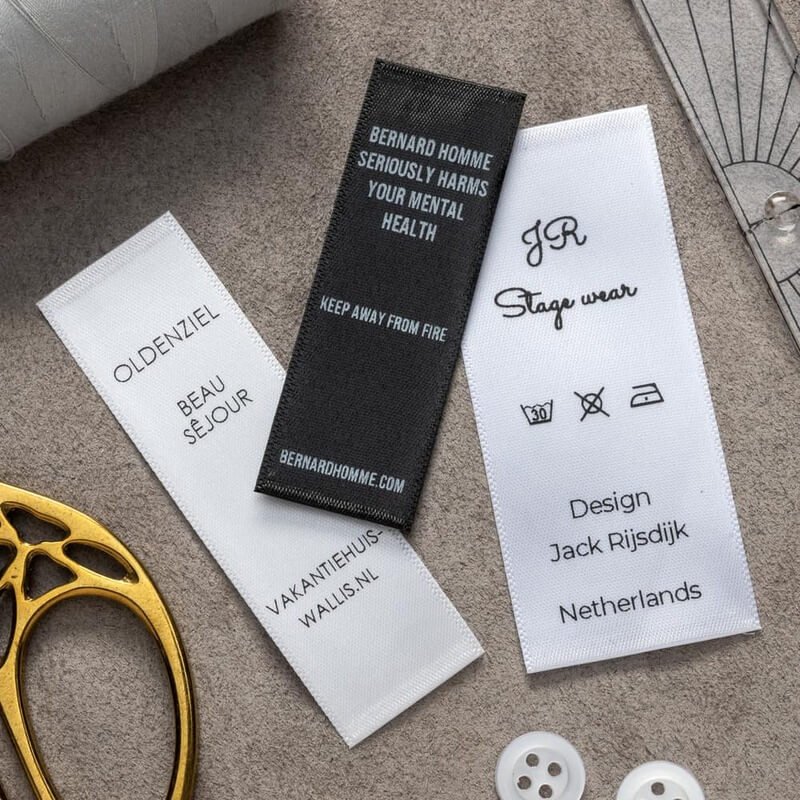
7. Garment-dyed vs. other dyeing methods: A quick look
7.1 How is it different from dyeing fabric first (fabric-dyed or piece-dyed)?
The most common alternative to garment-dyeing is called ‘fabric-dyeing’ or sometimes ‘piece-dyeing’ (when referring to dyeing fabric in large pieces or rolls). This is one of the different fabric dyeing techniques. In this method, the big rolls of fabric are dyed to the desired color before any cutting or sewing happens. The factory then cuts the pre-dyed fabric and sews it into clothes.
Fabric-dyeing usually results in a very uniform, even color across the entire garment because the fabric was dyed consistently as one large piece. You won’t typically see the subtle color variations at the seams that are characteristic of garment-dyeing.
Also, the fabric might not feel as instantly soft as garment-dyed fabric, because it hasn’t gone through that same garment-specific washing and softening process after construction. This helps answer if garment-dyed is better than regular dyed by explaining the distinct outcomes.

7.2 When garment dyeing is a great choice for brands
So, when is garment-dyeing a really good choice for a clothing brand?
- For extra softness and comfort: If the goal is super soft, comfortable clothes right off the rack.
- For vintage or unique color effects: To achieve that lived-in, slightly faded, or unique color look. Apparel brands choose garment dyeing for a unique look.
- For flexibility with color on finished items: Brands can make a batch of undyed ‘blank’ clothes and then dye smaller quantities in different colors based on demand. This can be more flexible than committing to large rolls of pre-dyed fabric.
- For casual wear: It’s especially popular for t-shirts, hoodies, loungewear, and other items where a relaxed style and feel are important for fashion apparel and casual wear.
Many innovative brands we work with at Packlove leverage garment dyeing for these exact reasons, creating products that truly stand out for their feel and aesthetic.
8. Seeing is believing: Examples of garment-dyed items
8.1 Common garment-dyed products
You’ll find garment-dyeing used on many types of comfortable, casual clothes. Some of the most common examples include:
- Basic product: Garment-dyed t-shirts and long-sleeve tees
- Garment-dyed hoodies and sweatshirts
- Sweatpants and joggers
- Casual knit dresses or tops
- Sometimes even items like cotton shorts, casual button-down shirts, or denim products can be garment-dyed for a softer, specific look.
These types of items really benefit from the extra softness and the relaxed, often vintage-inspired colors that garment-dyeing provides.
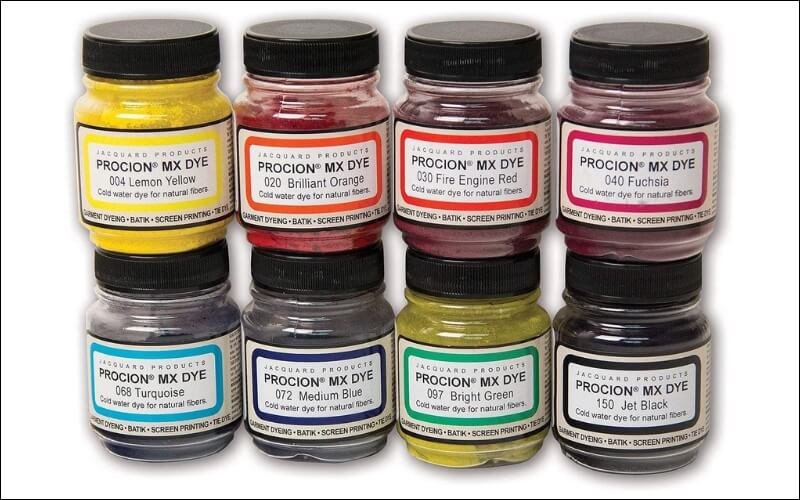
8.2 How to spot a garment-dyed item
Want to become a garment-dye detective? Here are a few clues that answer how to tell if a shirt is garment-dyed:
- Check the seams: Look closely at areas like the collar, cuffs, pocket edges, and side seams. You might see the color is slightly lighter or more concentrated right along the stitching, or the fabric might look a bit puckered or more textured there. This is a classic sign reflecting the visual appeal of garment-dyed clothes.
- Feel the fabric: Garment-dyed items usually feel noticeably softer and more ‘broken-in’ than items made from fabric dyed before sewing.
- Look at the overall color: Is the color perfectly flat and uniform, or does it have a subtle, slightly ‘weathered’, ‘sun-faded’, or vintage depth to it? The latter often points to garment dyeing.
- Check the labels: Sometimes the hang tag or care label will actually say ‘garment-dyed,’ ‘pigment-dyed’ (a type of garment dye), or mention the unique color process.
9. Frequently asked questions (FAQs) about garment-dyeing
9.1 What exactly is garment-dyed?
Garment-dyed means the finished piece of clothing (like a t-shirt that’s already sewn together) is dyed all at once. This helps define what garment dyeing is. This is different from dyeing the fabric before the clothing is made. The garment dye meaning is centered on this post-construction coloration.
9.2 Does garment-dyeing make clothes shrink?
Often, yes, garment-dyeing pre-shrinks clothes because of the hot water used in the process. This means they usually don’t shrink much more when you wash them at home. This explains how garment dyeing affects clothing fit and shrinkage. However, always check the care label, as results can vary slightly depending on the fabric and the specific dyeing process.
9.3 Why are garment-dyed clothes usually so soft?
The dyeing process involves washing and tumbling the completed clothes, often with special softeners. This helps to relax and soften the fabric fibers, making the clothes feel extra comfortable and broken-in from the start, contributing to their softness.
9.4 What materials are best for garment-dyeing?
Natural fibers like material: cotton and linen are excellent for garment-dyeing because they absorb dyes very well and become wonderfully soft. Cotton’s suitability is excellent for garment dyeing. Some other fabrics like rayon or Tencel can also be garment-dyed effectively.
9.5 What kind of brand labels should I use if I’m garment-dyeing my clothes?
This is important! If you attach labels before dyeing, choose materials that resist dye, like 100% polyester Woven Labels. Otherwise, it’s often safer to attach labels after dyeing to ensure they look perfect. Packlove can help you choose the best labels for clothes that will be garment-dyed, such as durable woven labels, Heat Transfer Labels for post-dye application, or informative Hang Tags to explain the unique qualities of your garment-dyed items. Packlove provides labels for garment-dyed apparel. (You can read more in Section 5 above!)
Explore more:
Garment-dyeing means clothes are colored after they are fully sewn. This confirms garment dyeing is a post-construction process. This process makes them feel extra soft and comfortable. It gives them a unique, often slightly uneven or vintage-style color.
If you’re a clothing brand, designer, or maker, garment-dyeing could be a fantastic technique to explore for your apparel line. It’s a great way to offer products with highly desirable qualities like exceptional softness and unique, trendy aesthetics that customers love.
This helps you understand the effect of garment dyeing on clothes and learn about the benefits of garment-dyed items. And if you do decide to create garment-dyed products, remember that getting the branding details right, like your labels and hang tags, is key. Packlove is here to help you choose the perfect solutions to complement your beautifully dyed garments!
Exploring garment dyeing for your brand? Don’t forget the perfect labels! Contact with Packlove’s branding experts.

















